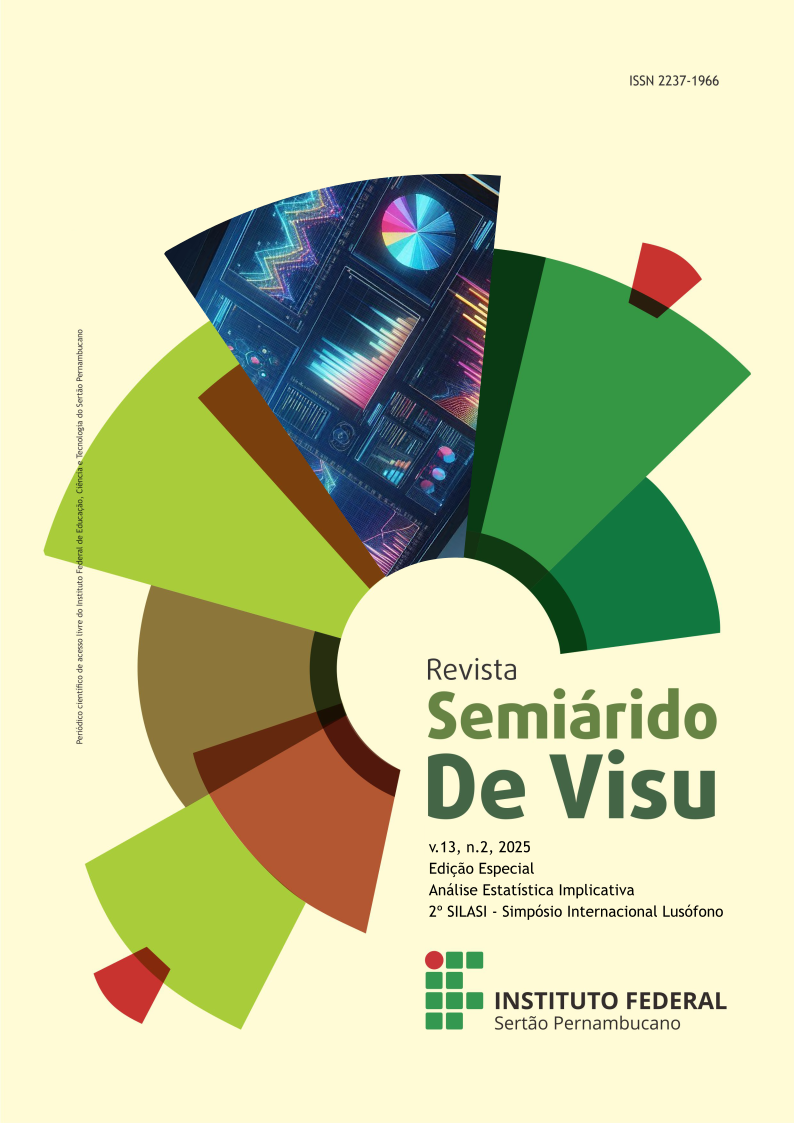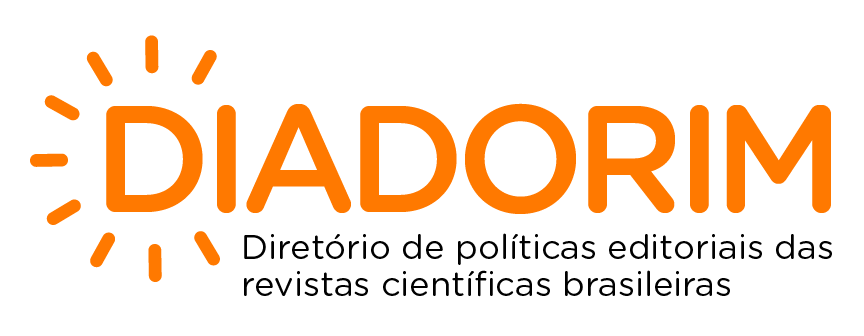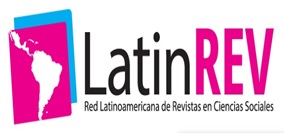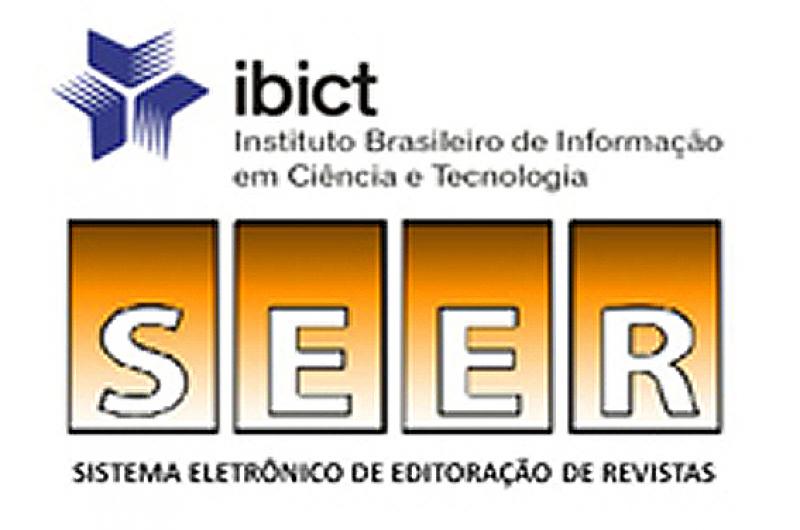Statistical literacy in the early years of elementary school: trends in Brazilian scientific production using Implicative Statistical Analysis
DOI:
https://doi.org/10.31416/rsdv.v13i2.1126Keywords:
Teaching statistics, Bibliographic research, CHIC® softwareAbstract
The present study aims to analyze trends in Brazilian scientific production regarding Statistical Literacy (FL) in the early years of Elementary School in the light of Implicit Statistical Analysis (ISA). To this end, we used systematic bibliographical research that included a search, from 2013 to 2023, for articles in the Periodical Portal of the Coordination for the Improvement of Higher Education Personnel (CAPES) and for theses and dissertations in the Theses and Dissertations Catalog from CAPES. A total of 34 works were selected to compose our sample. The data was processed using descriptive statistics and Implicit Statistical Analysis (ISA) with the aid of the CHIC® software (Hierarchical Classification Implicit and Coercive, version 7.0, 2014). In ISA, we use the implicit graphs to analyze the implication relationships between the variables, making it possible to identify the main trends in research on statistical literacy in the initial years. Thus, there was a concentration of scientific production in the Northeast region, a strong trend of research aimed at teacher training and methodologies that rely on the use of diagnostic tests as an instrument for constructing data.
References
ALMEIDA, C. C. Análise de um instrumento de letramento estatístico para o ensino fundamental II, Dissertação de Mestrado - Programa de Pós-Graduação em Educação Matemática, Universidade Bandeirante de São Paulo, 2010.
ANDRADE, V. L. V. X. de; REGNIER, J-C. Análise Estatística Implicativa e Análise de Similaridade no Quadro Teórico e Metodológico das Pesquisas em Ensino de Ciências e Matemática. Recife: Editora Universitária da UFRPE, 2020.
BATANERO, C.; DÍAZ, C.; CONTRERAS, J. M.; ROA, R. El sentido estadístico y su desarrollo. Revista Didáctica de las Matemáticas, La Rioja, v. 83, p. 7-18, 2013.
BRASIL. Ministério da Educação. Secretaria da Educação Básica. Base Nacional Comum Curricular. Brasília, 2017.
BRASIL. Ministério da Educação. Parâmetros Curriculares Nacionais. Brasília, 1997.
CAZORLA, I.; MAGINA, S.; GITIRANA, V.; Guimarães, G. Estatística para os anos iniciais do ensino fundamental. Brasília: Sociedade Brasileira de Educação Matemática – SBEM, 2017.
COUTURIER, R.; BODIN, A.; GRAS, R. A classificação hierárquica implicativa e coesiva. Manual Curso CHIC versão 2.3. Acesso em jun. 2024. Disponível em: http://math.unipa.it/~grim/asi/asi_03_gras_bodin_cout.pdf
GAL, I. Adult’s statistical literacy: meanings, components, responsabilities. International Statistical Review, n. 70, 2002.
GAL, I. Promoting statistical literacy: challenges and reflections with a brazilian perspective. In:Temas emergentes em letramento estatístico. Org: Monteiro, C. ; Carvalho, L. Recife: Ed. UFPE, 2021
GIORDANO, C. C. O desenvolvimento do letramento estatístico por meio de projetos: um estudo com alunos do Ensino médio. Dissertação (Mestrado em Educação Matemática). Pontifícia Universidade Católica de São Paulo, São Paulo, 2016.
GONZALES, H. et al, Educação Estatística em documentos curriculares brasileiros: um estudo comparado. Educação Matemática em revista. Brasília, v. 27, n. 77, p. 180-189, out./dez. 2022
GUIMARÃES, G.; GITIRANA, V. Estatística no Ensino Fundamental: A pesquisa como eixo estruturador. In. BORBA, R. E. S. R.; MONTEIRO, C. E. F. Processos de ensino e aprendizagem em Educação Matemática. Recife: UFPE, 2013.
LIMA, T. C; MIOTTO, R. C. Procedimentos metodológicos na construção do conhecimento: a pesquisa bibliográfica. Rev. Katál, v. 10, n. esp., Florianópolis, 2007, p. 37-45.
LIRA, F. L.; CARVALHO, L. M. T. L. O Papel Formador do Coordenador Pedagógico na Educação Infantil na perspectiva do Letramento Estatístico. Anais XIV ENEM. Encontro Nacional de Educação matemática, 2022.
MONTEIRO, C. E. F.; CARVALHO, L. M. T. L. Temas emergentes em Letramento Estatístico. Recife: Editora Universitária UFPE, 2021.
VOTTO, T. R.; SILVA, M.P. Tendências na Produção Científica Sobre Estatística Nos Anos Iniciais: Contextos Formativos de Estatística na Formação Inicial e Continuada de Professores. JIEEM v.13, n.4, esp, p. 494-504, 2020.
WATSON, J. Statistical literacy at school: growth and goals. New Jersey: Lawrence Erlbaum Associates, 2006.
WATSON, J.; Callingham, R.; Statistical Literacy: a complex hierarchical construct. Statistical Education Reasearch Journal, v. 2, n. 2, p. 3-46, 2003. Disponível em: https://www.stat.auckland.ac.nz/~iase/serj/SERJ2(2)_Watson_Callingham.pdf
WILD, C. J.; PFANNKUCH, M. Statistical thinking in empirical enquiry. International Statistical Review, Auckland, v.67, n.3, p. 223-265, 1999.
Downloads
Published
How to Cite
Issue
Section
License
Copyright (c) 2025 Revista Semiárido De Visu

This work is licensed under a Creative Commons Attribution 4.0 International License.















